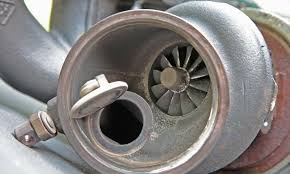


then you no doubt know that the turbo wastegate is probably the most important part of the boost system.
If you drive a turbocharged car, then you no doubt know that the turbo wastegate is probably the most important part of the boost system. The wastegate is what controls exactly how much exhaust flow is allowed to enter a turbo to build boost pressure. If the wastegate fails, a turbo may easily start generating too much boost pressure, and that will lead to engine failure.
A turbocharger is a device that harnesses the high speeds of an engine’s exhaust gases in order to spin a turbine, thereby compressing air from the engine’s intake, so that there is more oxygen that can be ‘burned’ by the fuel in the engine, increasing the power produced by the engine.
This spring-loaded component is typically also linked to either the boost controller or the intake manifold through a diaphragm; as boost pressure in the intake manifold is increasing above a certain set point, the boost pressure exerts itself on the diaphragm, compressing the spring, which in turn opens up the wastegate.
There are two main types of wastegates: internal and external.
A flap valve in the turbocharger housing works as part of an internal wastegate, routing exhaust gas away from the turbine. The internal wastegate is the easiest and least expensive choice for a stock turbocharged vehicle.
An external wastegate is its own separate device that is generally mounted on the exhaust manifold. External wastegates offer considerably more desirable boost control, especially at very high-performance levels where precise control over exhaust flow is required.
Without a wastegate, boost pressure from the turbo would keep climbing – as long as the engine produced exhaust gases, that is – until the engine blew itself apart. And turbocharged engines are sensitive. There’s a lot of pressure going through the engine. It doesn’t take much to cause problems. Most vehicles with turbo motors have an electronically controlled wastegate.
Here’s why a wastegate is essential for controlling boost:
Keeps Boost in Check: The wastegate opens when the boost reaches a certain level and lets some exhaust blow past the turbine. This factors in excess boost pressure and prevents it from blowing the turbo up or damaging the engine.
Performance-enhancing: A working wastegate ensures that the turbocharger works within a safe range for the engine, maximizing output power while maintaining reliability.
A defective wastegate can cause performance issues as well as full engine damage depending on how far along it declines. Below is an instruction that describes a task, paired with an input that provides further context. Write a response that appropriately completes the request. Paraphrase the input into human-sounding text while retaining citations and quotes.
When the wastegate is stuck open all the exhaust gas will sidestep the turbine, and the boost pressure will be too low. This leads to bad engine performance, less power, and potentially poor fuel efficiency.
A stuck shut wastegate will let no exhaust gases bypass the turbo and, potentially, over-boost the turbo-charged engine. This could result in engine knock (also called detonation); damaged pistons; and, at worst, a blown engine.
Wastegate rattle isn’t dangerous, but if you hear it, it might be a sign of a worn wastegate actuator or flap. It’s common in older or modified vehicles, and it should be fixed before it wears fully or fails.
Prevent your wastegate from going awry with periodic maintenance and attention. Not maintaining it can result in busted engines. Some tips to DIY wastegate maintenance are as follows:
Regular Inspection: Occasionally inspect the wastegate for signs of wear, especially if you’re running a high-performance or heavily modified setup.
Actuator Connectivity – Check that the actuator is connected with the valve stem and that the diaphragm and springs are intact. 4. Actuator Operation.
The popular term for this part (wastegate) is outdated and confusing because it suggests that the adjustable valve isn’t necessary and would not be useful in controlling boost pressure in a well-designed turbocharged engine. However, the turbo wastegate is in fact the major system designed into turbocharging to control boost pressure (prevent over-boosting), maximise engine performance within safe limits, and preserve the engine (prevent overheating and damage to engine components and the turbocharger shaft).
